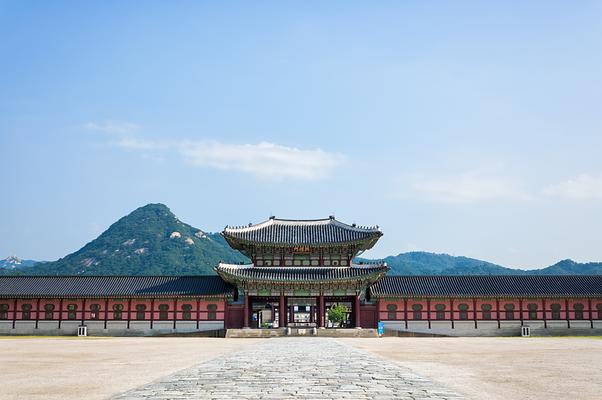,url-https%3A%2F%2Fwww.tripexpert.com%2Fimages%2Fmarker-fade%402x.png(126.95639,37.57449)/126.96669984608889,37.576914007057795,14.099968571827553/1280x214@2x?access_token=pk.eyJ1IjoidHJpcGV4cGVydHdlYiIsImEiOiJja2Fud3l2MDcwbXZ0MndyeGF3eGI3ZWhzIn0.zLqNa1RECyZZadF8zfQM5w)
Gyeongbokgung Palace vs Seodaemun Prison History Hall
Both are rated highly by professionals. Overall, Gyeongbokgung Palace ranks significantly better than Seodaemun Prison History Hall. Gyeongbokgung Palace is ranked #2 in Seoul with accolades from 8 reviewers like Lonely Planet, Michelin Guide and Lonely Planet.
Gyeongbokgung Palace
 Fodor's
Fodor's
 Frommer's
Frommer's
 Lonely Planet
Lonely Planet
 Lonely Planet
Lonely Planet
 Lonely Planet
Show All Reviews
Lonely Planet
Show All Reviews
161 Sajik-ro, Jongno-gu, Seoul, South Korea
From $0 /night
"A must-see for anyone interested in history and architecture, Gyeongbokgung is the most visited tourist site in Korea so crowds can be dense."
Full review
"Of the five grand palaces built during the Joseon Dynasty, this was the largest and most important one."
Full review
Top Choice
"Two of the grandest architectural sights in Seoul are here."
Full review
"One of the most impressive structures within Seoul's main palace Gyeongbokgung, this large pavilion rests on 48 pillars and overlooks an artificial lake with two small islands."
Full review
"The main palace building of Gyeongbokgung stands on a double-tiered stone platform with surrounding open-sided corridors."
Full review
Seodaemun Prison History Hall
 Frommer's
Frommer's
 Lonely Planet
Lonely Planet
 Atlas Obscura
Atlas Obscura
 Fodor's
Fodor's
484 Tongil-ro, Seodaemun-gu, Seoul 120-760, South Korea
From $0 /night
"Located in Seodaemun Independence Park, this prison-turned-museum was built at the end of the Joseon Dynasty and used as a place to torture and kill Korean patriots of the independence movement."
Full review
Top Choice
"Built in 1908, this one-time prison is a symbol of Japanese cruelty and oppression during their colonial rule of Korea from 1910 until 1945."
Full review
"A chilling monument to Korean patriots who resisted the Japanese occupation. "
Full review
"It once imprisoned Korean independence activists...it houses history exhibits and various prison rooms documenting their suffering and honoring the lives lost on the road to Korean independence."
Full review







